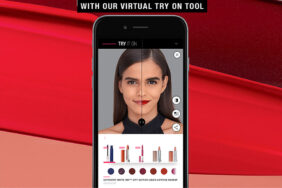
The author of the 1999 novel Enchanting a Disenchanted World: Revolutionizing the Means of Consumption, George Ritzer described “retailtainment” as the “use of ambience, emotion, sound and activity to get customers interested in the merchandise and in a mood to buy.” Today, that is more the definition of Retail Theatre as the meaning of entertainment has massively changed in the last two decades. And yes, it has a lot – if not everything – to do with digitization.
Recently L’Oreal held a Digital Media Talk with their global Chief Digital Officer, Lubomira Rochet, to talk about their accelerated digital transformation during the pandemic and the key trends that are going to be shaping the beauty retail industry in the coming five years.
“E-commerce is our single largest market in the world”, said Rochet explaining that if e-commerce was a market for L’Oreal, then it would be the biggest in terms of market value, worth nearly $5.9 billion. Since 2010, L’Oreal has gone from zero to 25% of sales coming from e-commerce, and 62% of their media investment is now in digital.

Although L’Oreal was hit hard by the pandemic and the subsequent lockdown, as were most beauty retailers, with a 4.8% drop in sales, their e-commerce operations ended up being a saving grace by compensating for 50% of their revenue from brick-and-mortar stores — and in some countries like South Korea it was 100%.
As a result of the recent strides they’ve seen with their e-commerce operations and the value – both monetary and emotional – it has generated, L’Oreal is well on their way to drive 50% of their sales from e-commerce.
Clearly e-commerce is big business. However, since the pandemic, pretty much every industry in the whole world is catching up with e-commerce, which births the need for creativity and innovation in the way e-commerce is carried out. And that’s where retailtainment comes into play. Obviously, when you combine retail and entertainment you get retailtainment, but the question is how do we combine retail to what kind of entertainment to make the biggest impact?
Reatiltainment isn’t really a new concept. From Tiffany and Co jewelers bringing the movie Breakfast at Tiffany’s to life to Nike’s flagship New York stores featuring a mini-basketball court, treadmills, an enclosed soccer area and such that their customers can actually use and even when UAE’s very own Huda Kattan of Huda Beauty ran a sci-fi themed immersive retail experience pop-up right in the centre of Covent Garden, London, to launch her new eye shadow palette they were all experiential retail or efforts (campaigns) promoting retailtainment.
However, lets talk about what the term curtails now and what it would evolve into in the near future.
Live shopping
Live has been the name of the game for a few years, thanks to social media. If an event wasn’t live streamed on Instagram or Facebook, it’s almost as good as it never happened. But the value of these livestreams are now no longer limited to just views or engagement, there is a direct sales opportunity here.
Live Shopping is when viewers buy goods online from brands, retailers, or individuals who show off their latest finds online. If this concept reminds you of the good ol’ QVC or Telebrands shopping days, then you’re not entirely wrong. The principal is pretty much the same but social media and digital live streaming capabilities today has made the process a lot more seamless and convenient by bringing into play the element of heightened interactivity.
“Think of your typical TV show but in bigger, faster fashion with thousands of comments, questions, emojis… when you are following influencers that are reviewing hundreds of products at the speed of light and even selling for millions in a single day”, explains Rochet.
The most popular streams at this point are fashion, jewelry, beauty, and skincare, but that’s not to say that other verticals of the retail industry can’t (or won’t) take it up soon. In 2019, China’s live-stream shopping market was worth $66 billion, according to iResearch, a Shanghai-based market research firm. That could more than double to almost 1.2 trillion yuan (roughly $170 billion) this year, the firm forecast in July.
That is one indicator that the trend is here to stay. Some experts predict that retailers all over the world are going to soon start using “shop streaming” to not just grow engagement and sales but also attract new customers from all over the world. Now they could wither piggy back on services like Amazon Live or create their own third party solutions to bring it forth to this region. Who is going to do this first here – A Futtaim? Al Shaya? Will that be you?
Gamification

The mobile gaming industry is growing at a rate of 25% each year and is expected to triple in size to $4.4 billion by 2022. But what’s in it for retailers, you might ask. Gamification of retail experiences, which can be defined as use of game mechanics and game design techniques in retail contexts to enhance customer experience.
“Gaming is big – big business, big platforms, big audiences and you need to know that more than 50% of those audience is women. What is interesting is that gaming and e-sports is becoming a hot marketing channels for beauty. Maybelline has been pioneering there and has started live streaming from Twitch (which is a gaming platform that is owned by Amazon). Maybelline has partnered with QQ to allow the users of QQ to makeup the avatars in the games they were playing”, said Rochet.
Gamification in retail can be by means of interactive rewards systems, a mobile game like the ones where you create avatars using different makeup and apparel brands, or it could even be in-store like what Nestle did recently where it allowed kids to design and print their own t-shirts in Carrefour.
What gamification also does is, it allows retailers to collect data and insights into their customers, let them try and test new products, as well as keep the overall engagement high.
Locally, we’ve also seen Home Centre’s mobile AR feature that allows shoppers to visualise furniture in their chosen space. That could be considered as Gamification, but from a broader sense it’s the brilliant integration of technology into retail to enhance customer experience and visibly improve sales.
Beauty Tech

Locally, we’ve also seen Home Centre’s mobile AR feature that allows shoppers to visualise furniture in their chosen space. That could be considered as Gamification, but from a broader sense its the brilliant integration of technology into retail to enhance customer experience and visibly improve sales.
BeautyTech is beauty augmented by reality. If you remember playing the dress up video games as a child where you have to change the hair and eye colour, dress etc. of an avatar, then the BeautyTech apps could be compared to that, except that you get to try all of that on your actual self with better precision and accuracy.
“In 2018, we made a bold move to acquire Modiface, the leading AI and AR company in Toronto. We went against the belief that AI and AR can’t change the beauty experience and I think we were right. Today, we use it to let our consumers try shades and colours online, we allow them to get scientifically backed skin and hair diagnostics, and we have seen amazing appetite from our consumers for those online services – it has attracted 1 billion visits to our Modiface services:, she said.
The way ModiFace works is, with its proprietary facial Recognition technology, it first analyses the tone, texture, light reflections and other various unique characteristics of your skin and then superimposes the virtual makeup selections on the live video of your face.
Needless to say, beauty tech saw more acceptance by customers during the Covid lockdown as people weren’t confident to go to stores yet but still wanted to keep the dressing rows ready for the better days and face all glammed up for the Zoom interviews.
“Beyond the gaming platforms, which we are starting to be active in, the whole gaming culture and gaming comms are invading this space. The future of beauty will really rely on the intersection of live streaming, gaming, beauty tech – retailtainment”, said Rochet.
You must be logged in to post a comment.